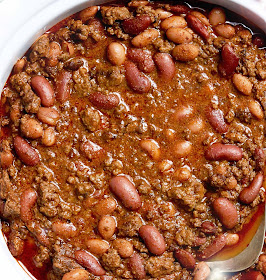Exceptional food that worth a special journey. And all other foods that can kill you.
Pages
▼
Saturday
How to Cook Beans Fast and Delicious?
Key Points:
a) Brining
b) Cooking with salt
c) pH level
One factor that affects the cooking rate of beans is the pH level. Acidic environments tend to cause beans to seize up—which is why, for example, Boston baked beans, cooked in acidic molasses and tomato, can take as long as overnight to soften properly. Brining the beans in saltwater mitigates this effect to some degree, but the only way to be sure that your beans will cook properly in acidic stews (like, say, chili) is to soften them separately and add them to the pot later on.
What Happens if You Do not Soak Beans Before Cooking?
It will take too long to cook. When boiled the beans will burst into smaller pieces with hard or tough bean skin. I will result into a mushy and starchy mixture.
Related Blog Post: Are you into authentic paleo diet or healthy lifestyle? Spare a few minutes and get more information about the best vegetarian cookbooks available (James Beard Award Winners). Please click here NOW… Best Vegetarian Diet Cookbooks of All Time- 2017.
Why You Should BRINE the Beans and Not Just Soak Them?
Dried beans defy most of the rules of cooking. For something so small, they sure do require a lot of cooking. While the active work is minimal, it can be frustrating when a considerable investment of time yields subpar results. You want beans to be creamy, with soft skins. However, often the skins are still tough despite hours of cooking. Worse, the beans have exploded and formed a starchy mass. What to do? Professional chefs recommend (1) brining the beans ahead of time, and then (2) cooking them with salt, or a salty ingredient such as chicken broth, pancetta, or Parmesan if you prefer it.
How to brine beans? Dissolve 3 tablespoons salt in 4 quarts cold water in large bowl or container. Add dried beans and soak at room temperature for at least 8 hours or up to 24 hours. Drain and rinse well.
The Science behind Brining Beans
Beans with tough skins have a tendency to burst in the process of cooking, spilling their starchy innards into the pot and finishing with a sticky, unappealing texture.
Salting beans can help quickly tenderize their skins, preventing blowouts or bursting while cooking, which is the key to beans that cook up creamy rather than starchy.
Magnesium and calcium, two ions found in bean skins that act kind of like buttresses, supporting the skins’ cell structure and keeping them firm. Because calcium and magnesium ions form links between pectin molecules, they are responsible for creating strong cells that are tightly bound together. During soaking, the sodium ions will filter only partway into the beans, so their greatest effect is on the cells in the outermost part of the beans.
If you soak beans in salted water overnight, the sodium ions will react with the calcium and magnesium, leaving you with skins that soften at the same rate as the beans’ interiors.
If you really want speed, the most efficient and effective to cook beans fast and easy is by using an electric pressure cooker. Food preparation for your family has never been this easy. Check the best electric pressure cooker on the market today rated highly by thousands of satisfied customers. Click the link here now… 8 Best Electric Pressure Cooker.
Bookmark it! Share it with your friends they might not know it yet. Please share and look cool! :-)
References:
J. Kenji López-Alt. 2015. The Food Lab: Better Home Cooking Through Science. W. W. Norton & Company. ISBN-13: 978-0393081084
The Editors of America's Test Kitchen and Guy Crosby Ph.D. 2012. The Science of Good Cooking (Cook's Illustrated Cookbooks), First Edition. Cook's Illustrated. ISBN-13: 978-1933615981
Related Cooking Video: Best Method for Cooking Dried Beans

No comments:
Post a Comment